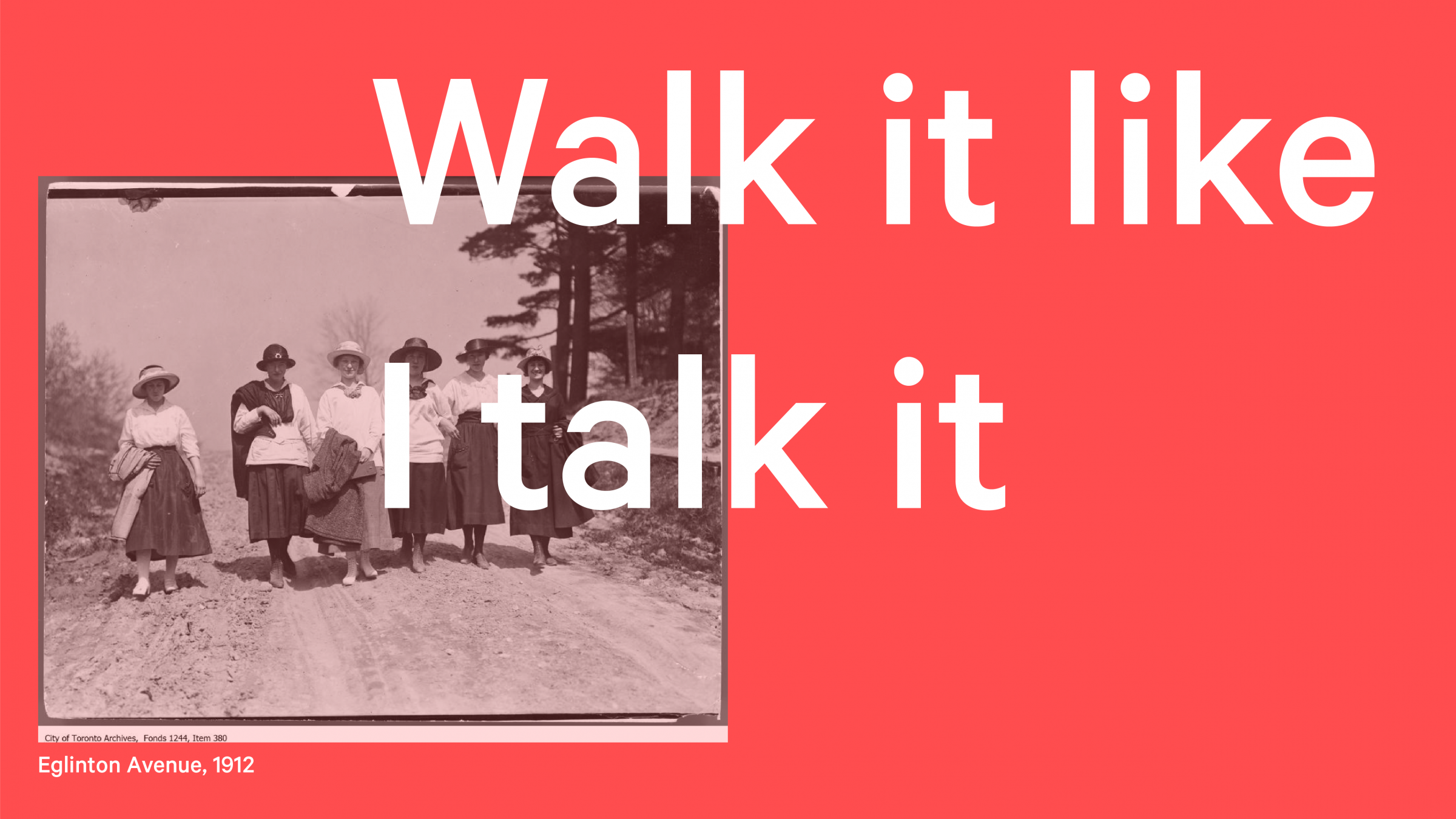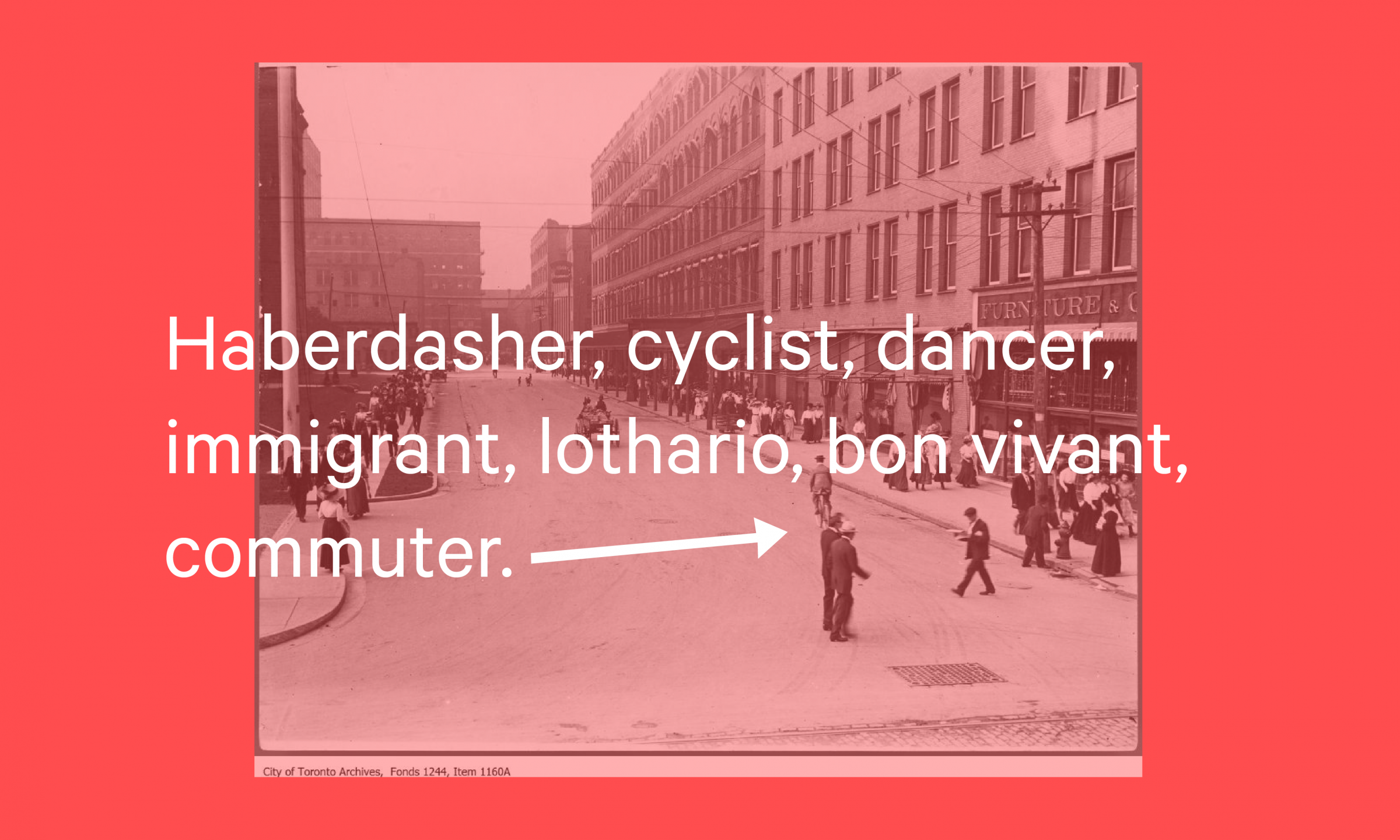One of the unique charms of Toronto is that we are truly world-class public fretters on the subject of streetscapes. The problem is that all this talk tends to preclude any substantial action when it comes to redesigning those streetscapes. Worse, the words we use to describe both our streets, and our plans for them, often hinder our efforts to make progress.
The strongest case in point is our Vision Zero Plan: two years into its life, it has so far achieved little more than introducing the phrase “Vision Zero” to our civic vocabulary. Though there are efforts to keep us focused, meaningful changes have been slow to nonexistent. In the case of something tangible, such as the reimagining of Yonge Street between Sheppard and Finch, changes have been purposely put off so that we might spend more time debating, bloviating, and equivocating, but otherwise doing precisely nothing to make our streets safer: more words seems to be the only outcome.
Talking like we’re walking
To make matters worse, even the way we talk about our goals tends to reflect how deeply mired in the status quo we are. We use language that privileges our car-centric, dysfunctional streets to try to change how people think about streets in general.

The most obvious forms of this tend to come from the people who are most interested in maintaining that same status quo. The favourite riposte of tabloid editorialists and suburban city councillors to any suggestion that Toronto’s streets might need reimagining is to declare the idea another salvo in the “war on the car.”
Councillor Mike Layton rightly pointed out that such rhetoric was both needlessly divisive and exaggeratedly violent. Plenty of other urban observers have pointed out that the opponent in this supposed war would presumably be “people.”
OK commuter

Off the battleground, there are plenty of subtle ways in which even supporters of safer streets handcuff their cause. One of the most common is to focus on “commuters”: though it also pops up in a War on the Car column, even a devoted urban advocate like Richard Florida tends to fall back to focusing on commuters.
There are practical reasons for this: our most widely available and easiest-to-gather statistics tend to measure how people commute, and the economic necessity of getting people to work is a crucial aspect of street design. But it sells the reality of a city woefully short: focusing on commuters reduces streets to something to be traversed — a tunnel from home to work and back again.
Walk (and bike and bus and drive) this way
The reality is streets are the places where cities are properly experienced. Even if you drive to work, there’s a fairly good chance you use the same streets to walk the dog, get some cardio, or enjoy a pint on a patio. We all become pedestrians after we park.
This is how we actually use streets. Though we tend to pigeonhole people into one way of getting around — “driver,” “cyclist,” “pedestrian,” “transit rider” — most of us are at least two of those on every single trip we take. These restrictive definitions make it easier to crunch data, but they are snapping the elasticity of city life: one of the benefits of cities is that they allow you to do different things from moment to moment.
The fancy planner term for how we actually get around is “multimodal transport.” This isn’t any more lively, but it is at least a bit more accurate — a description that applies generally to most of the language we are developing to capture the fulsome reality of our streets.
Connect the dots to complete the street
Take, for instance, the notion of “complete streets.” It is an increasingly popular way to get people thinking about streets in that holistic sense: you don’t actually have a “street” unless you have places to walk, bike, sit, grab a streetcar, and, sure, drive.

While it’s a start, it’s also helplessly entangled by the fact that, for a very long time in North America, “street” has been irrevocably tied to the simpler notion “where cars go”: the fact we even need to include a modifier, “complete,” suggests that unencumbered car travel is its natural state.
Still, if we are ever to move beyond talk and actually change things, we have to start somewhere. The first step to changing something is conceiving that it could be different, and people aren’t generally good at conceiving of things they can’t express. With luck, in a generation or so, the idea of something like a “complete” street will be entirely redundant.